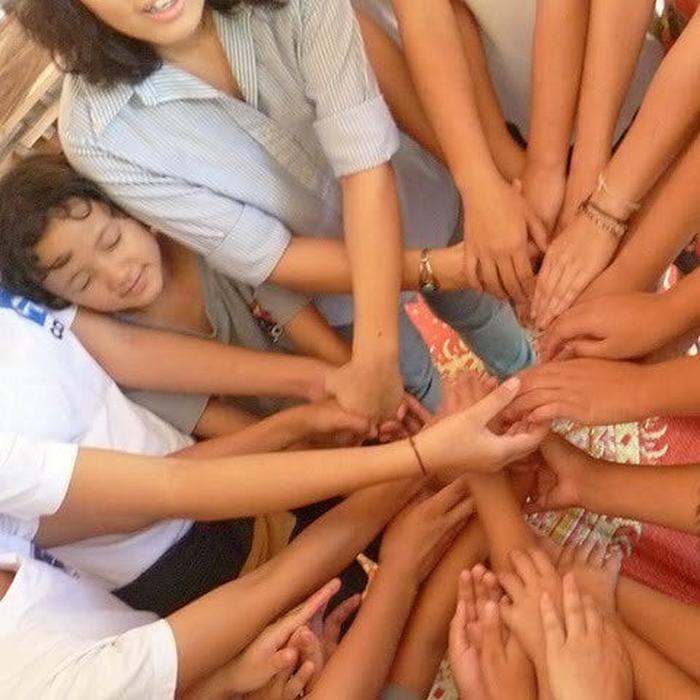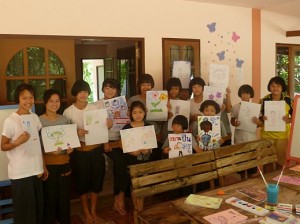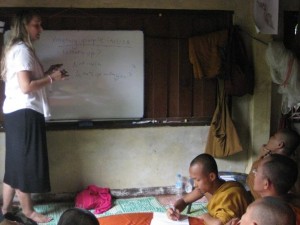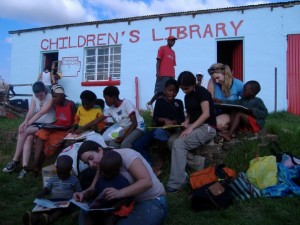
On December 10, 1948, the UN General Assembly ratified the Universal Declaration of Human Rights, which outlined rights for all people no matter their race, gender, religion, or class.
But today, our world is still struggling and striving for the ideals of individual freedom and foreign policy laid out in this document. Exactly 63 years after that declaration was signed, we still have a very long way to go.
To better understand human rights issues and stories around the world, I spent my young life traveling. Throughout my experiences, I’ve learned that human rights solutions do not occur in conference rooms or international assemblies. Nor do they occur among giant international organizations. It’s the underdogs of the human rights movement—the organizations you’ve never heard of—that make the real change happen. These groups and individuals are determined to end impunity and stop violations in the ever-evolving human rights story. They take risks, they tell stories, they move others to action, and they work tirelessly to change the world.
So today, I want to share with you five of those projects and organizations that I’ve had the fortunate opportunity to work with, and the ways you can get involved in their commitment to promoting and protecting human rights.
 After witnessing the human trafficking of young girls among the Northern Thai Hill Tribes, photographer Mickey Choothesa and social worker Anna Choothesa devoted their lives to rescuing, rehabilitating, and educating formerly trafficked and at-risk girls. COSA takes a unique approach to addressing human trafficking: It actually works directly with the communities who traffic their children. In fact, the couple regularly communicates and connects with the traffickers to help show them that educating children is a much more sustainable practice than exploiting them.
After witnessing the human trafficking of young girls among the Northern Thai Hill Tribes, photographer Mickey Choothesa and social worker Anna Choothesa devoted their lives to rescuing, rehabilitating, and educating formerly trafficked and at-risk girls. COSA takes a unique approach to addressing human trafficking: It actually works directly with the communities who traffic their children. In fact, the couple regularly communicates and connects with the traffickers to help show them that educating children is a much more sustainable practice than exploiting them.
Volunteers from around the world can visit Ban Suu Yuk, COSA’s shelter in Mae Rim Thailand, which houses 15 formerly trafficked young women, and learn first-hand about the complex realities of human trafficking. Get involved by becoming a COSA ambassador, volunteering your skills, or sponsoring one of the girls.
Soofia Asad is a groundbreaking photographer from Karachi,Pakistan, whose photography and art promote dialogue about the discrimination and gender violence women face daily. Her work pushes the boundaries of a woman’s place in society and offers underserved women a voice.
Her series “Harmony in Disjointed Thoughts” uses poetry, stop-motion animation, and photography to try to shatter cultural expectations and obligations for women around the world. Asad is also currently working on the One Hundred Women Project, a journey to photograph women around the world to share their unique stories and struggles. Take a look at her work and share its inspiration with your friends.
 The monks of the Saffron Revolution protested against the Burmese military junta in 2007, leading to a mass protest that inspired thousands of everyday citizens to take to the streets, despite the risk of torture and incarceration. After fleeing Burma under threat of imprisonment and assassination, the monks hid in the jungle—where I later met them.
The monks of the Saffron Revolution protested against the Burmese military junta in 2007, leading to a mass protest that inspired thousands of everyday citizens to take to the streets, despite the risk of torture and incarceration. After fleeing Burma under threat of imprisonment and assassination, the monks hid in the jungle—where I later met them.
In 2008, I became their English and resettlement teacher, conducting lessons in a jungle monastery. The experience forever changed my outlook, as I watched the Saffron monks resettle to America while keeping the Burmese democracy movement alive. They earned refugee status in the United States and founded the All Burma Monks’Alliance to continue their tireless fight for the freedom of both their colleagues and all other political prisoners. Their goal is a free and democratic Burma.
To learn more about the monks or to take action on Burma, sign U Pyinya Zawta’s petition to urge Secretary Clinton to publicly push for the release of Burma's political prisoners.
Ending the potential for nuclear warfare may seem like a topic left over from the Cold War, but it remains relevant in today’s globalized world. Robert Frye, founder of The Nuclear World Project and director of the film In My Lifetime, works to unravel the complex story of nuclear proliferation and create dialogue about the dangers it poses for mankind. The project and film are meant as a wake-up call for humanity, with the aim of creating an understanding of the realities of nuclear weapons, exploring ways to present other options, and facilitating a dialogue about a resolution that will preserve our world for future generations.
The film is currently screening at universities, festivals, and international organizations around the world. Host a screening for your group or university and kick off a dialogue about one of the most pressing global issues of our time.
 It’s not always economic poverty that keeps a community down—sometimes it’s a poverty of ideas. So the Global Literacy Project (GLP) works to remedy poverty on all fronts by creating a world in which people work together across borders to share resources and solve global problems.
It’s not always economic poverty that keeps a community down—sometimes it’s a poverty of ideas. So the Global Literacy Project (GLP) works to remedy poverty on all fronts by creating a world in which people work together across borders to share resources and solve global problems.
By bringing books and knowledge to impoverished communities, GLP creates a “culture of reading” in illiterate areas, like India, the Caribbean, and South Africa, where I witnessed the project’s work. The organization ships books and provides teachers, mentors, and education programs around the world to empower communities in a self-sustaining way, and also offers cultural exchange service learning opportunities for young students.
To donate books, be a mentor, or participate in GLP service learning opportunities, check out the GLP website.
In honor of the ratification of the Universal Declaration of Human Rights, what local and global human rights organizations would you add to this list? How can the rest of us get involved?